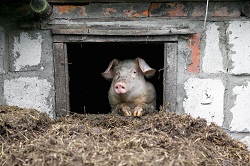Microalgae engineering — greener biomass and biofuel production
The aim of the 'Towards a better sunlight to biomass conversion efficiency in microalgae' (SUNBIOPATH) project was to improve the biomass yield of Chlamydomonas reinhardtii and Dunaliella salina, two species of green microalgae. Researchers investigated the photochemistry and sunlight capture process in light-harvesting complexes (Lhcs) present in the chloroplasts of these algae. Biochemical pathways and signalling mechanisms that influence ATP synthesis in the algal cell were also investigated. A scale-up approach was used to assess optimal growth and photoconversion efficiency of selected mutant microalgal strains in photobioreactors of different sizes (up to 250 litres). Biomethane production, reduction in carbon dioxide (CO2) emission and biomass yields were some of the parameters used for benchmarking performance. Project partners set up a micro-spectrophotometer with computer-assisted detection of photosynthetic mutants. This was used to screen over 10 000 transformants, which are cells that can express genes from introduced DNA. Out of four relevant mutants isolated, one affected the PTOX2 gene encoding plastoquinol oxidase, an enzyme that influences photosynthetic fitness. The other three mutants affected the light-harvesting antennae. Their analysis reveals that engineering cells with smaller light-harvesting antennae could permit light penetration deeper into the layers of photobioreactors, thereby increasing photosynthetic efficiency. To bring these advantages into action, a wave-surface-reactor was developed, which maximizes the growth of the antenna-reduced mutants. In the antennae, the Lhc protein, which binds pigments such as chlorophyll and carotenoids, were characterised and two factors (Nab1 and Cas protein) controlling their expression were investigated. These findings grant new insights into the regulation of the light response of the microalgae C. reinhardtii. Project partners also identified six rate-limiting enzymes for CO2 fixation during photosynthesis in the chloroplast. A vector for direct expression of one of these enzymes was designed with the aim of enhancing CO2 fixation. The SUNBIOPATH project will help provide new solutions for the valorisation of microalgal biomass, thanks to the genetic engineering of chloroplast and biomethane production. Furthermore, the development of microalgal biofuels will help reduce dependency on fossil fuels and reduce greenhouse gas emissions.







